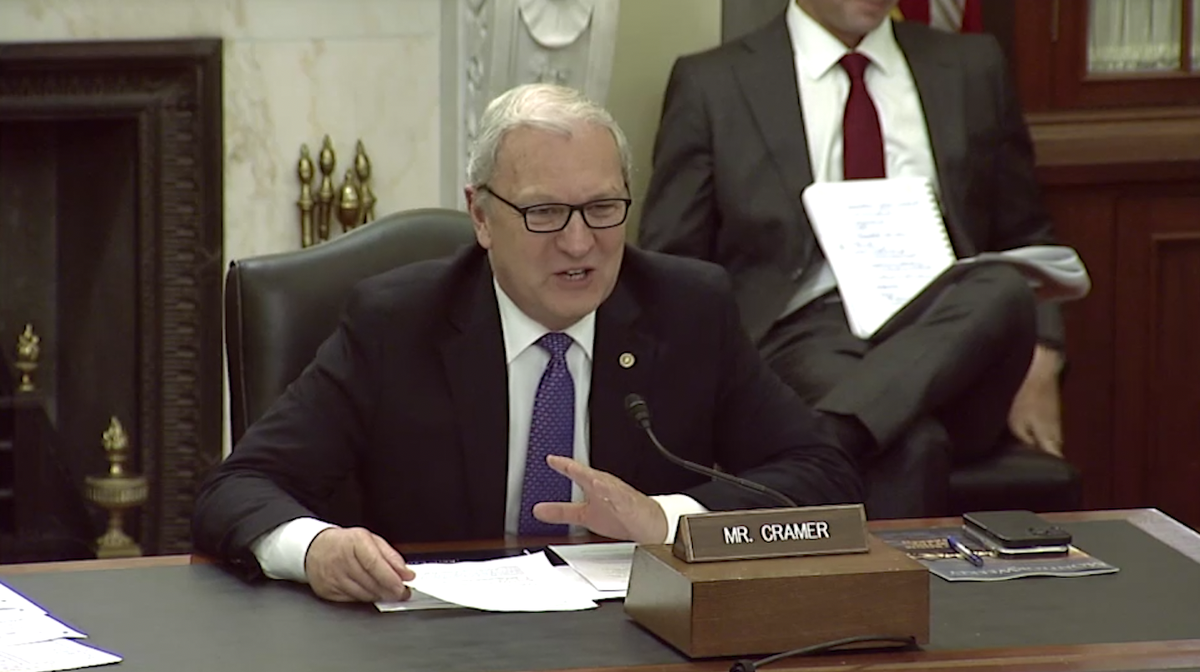Source: United States Senator Kevin Cramer (R-ND)
***Click here to download video one and video two. Click here for audio.***
WASHINGTON – U.S. Senator Kevin Cramer (R-ND), ranking member of the Senate Armed Services Seapower Subcommittee, pressed U.S. Navy and Marine Corps officials on five shipbuilding issues at a hearing on Tuesday. He also discussed workforce challenges across the defense industrial base and their impact on shipbuilding.
With Mr. Frederick Stefany, performing the duties of Assistant Secretary of the Navy for Research, Development, and Acquisition, Senator Cramer focused on the Next-Generation Guided-Missile Destroyer DDG(X) program, specifically maximizing collaboration in design and early construction between Ingalls Shipbuilding, Bath Iron Works and the Navy for the DDG(X) program.
“What we’ve learned on the submarine program is when the shipyards are working together with the Navy, we get the best result. We don’t have downtime where we have competitive pressures and we can continue the design spirals until we can get to the construction of the first two ships,” said Mr. Stefany. “Having both companies work together to get the best product using a single design tool, a single computer-based model, is what we’ve seen in the Virginia-class submarine program as the best way to design and build the initial ships of a new from-scratch program.”
Senator Cramer brought up the procurement of 8 Lewis-class oiler ships over the next five fiscal years as a good opportunity to provide stability to the industry and save money through a multi-ship procurement including economic order quantity authorities. Mr. Stefany agreed and added it would be the most efficient way to buy ships.
Senator Cramer also expressed concerns with the Navy’s failure to adhere to the shipbuilding acquisition plans clearly laid out in previous National Defense Authorization Acts (NDAA) and emphasized the need for transparency surrounding the amphibious ship LHA-9.
“The amphibious ship LHA-9 was previously authorized in fiscal year 2020 when Congress approved the procurement of this ship with incremental funding authority in the NDAA and added $650 million in the final Appropriations Bill. Subsequent appropriations bills have provided additional funding. After the 2021 budget request showed LHA-9 as a future procurement in 2023, the FY21 NDAA removed this ship to avoid double-counting it and clarified in section 126 that any ship added by Congress may not be specified as a new procurement quantity in future budget submissions. Why does this budget request again show LHA-9 as a new procurement in FY23 and how is this consistent with section 126?” asked Senator Cramer.
“I believe with the change in administration, not all were aware of the NDAA language,” responded Mr. Stefany. “I don’t think it was anything purposeful here. I think it was different parts of the Department not communicating well.”
Mr. Stefany expressed wishes for a consistent approach and metrics for incremental ship funding going forward. Senator Cramer reiterated the need for a consistent protocol as it would not only be beneficial for the military but Congress and taxpayers as well.
Shifting to amphibious ship requirements, Senator Cramer asked about the importance of continuing the LPD amphibious ship production line to meet the Marine Corps’ requirement of 31 ships and the top unfunded priority in advance procurement funding for LPD-33s.
“It’s critical to meet that requirement,” said Lt. General Karsten Heckl, the Marine Corps’ Deputy Commandant for Combat Development and Integration. “Within force design is our ongoing requirement as a Marine Corps and by law to be the crisis response force to the nation. Without those LPDs and other traditional L-class amphibious warships, we cannot be there. We’re already struggling now.”
Background:
Senator Cramer also delivered opening remarks at the hearing highlighting Biden’s inadequate Navy and Marine Corps budget.
“But I must say, like last year, I am very concerned that President Biden’s defense budget request is inadequate — nowhere near enough to give our Navy and Marine Corps the resources, equipment and training they need. Quite simply, because this budget doesn’t keep up with inflation, it’s a cut. I am hopeful we can come together again to provide the Department with the real budget growth it needs to fund critical modernization, readiness and personnel shortfalls,” said Senator Cramer.
